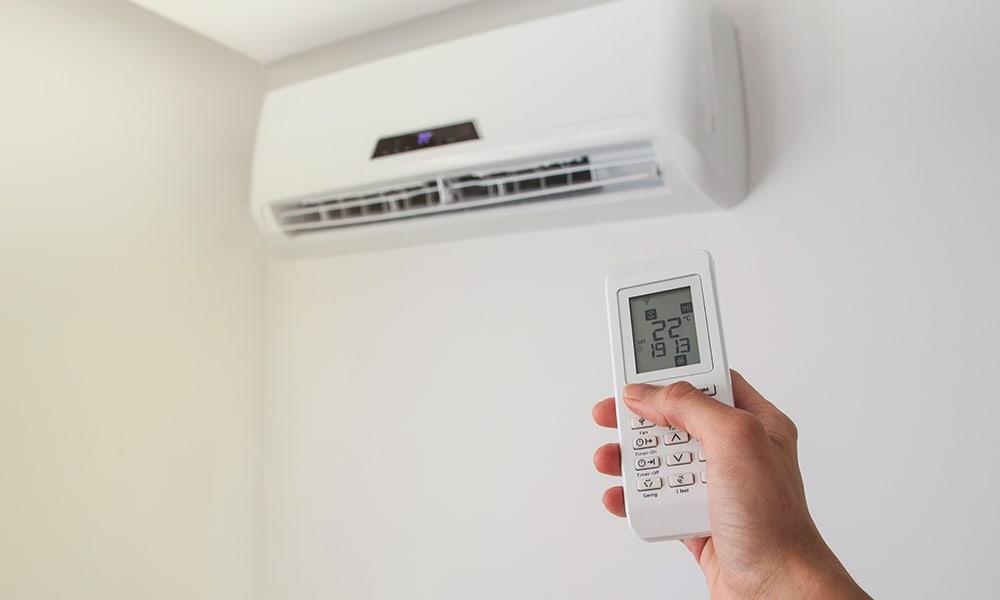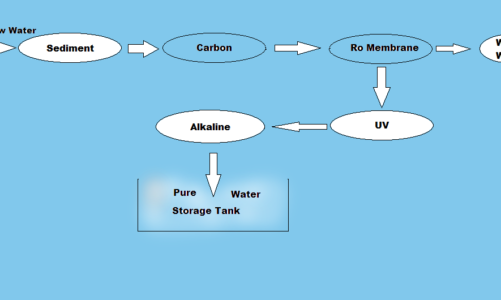Did you know that there are several different types of Split AC? Before you invest in the best Split AC 2 ton, we recommend reading this article so you can make the right purchase for your home.
What can we distinguish between different types within this variety? There are diverse variations within each class. And it is crucial to understand the different types and characteristics of air conditioning to make an informed equipment purchase. In this post, we will discuss all of the Split air conditioner’s possibilities.
Split Window AC
It’s a square box that houses all of the system’s working components. A hole must be drilled in the wall to install it, with one half of the gadget protruding outside and the other half inside. They are items that have been in use for a long time but are no longer as modern as they once were and could even be considered obsolete. The cost of installation is low, and maintenance is simple.
When it comes to the disadvantages of split-window air conditioners, we can mention that they use a lot more electricity. They are usually highly noisy gadgets, and making holes of such size in the walls of a structure is no longer permitted in many towns in Spain.
Wall Split Air Conditioners
These air conditioning systems are currently the most popular, owing to their considerable advantages over window air conditioning systems. They’re also usually less expensive. The compressor is situated outside the building and is connected to the inside unit that houses the evaporator-condenser. It is connected via tubes, and as a result, the hole that must be drilled in the wall is usually not very huge. On the market right now, there’s a lot to choose from.
The advantages of a wall-mounted Split air conditioner are that they are usually quiet and, at the same time, they are quite attractive gadgets, especially the newer models. They’re also simple to keep clean. As a disadvantage, we can remark that its installation is not entirely straightforward and is typically more complex than that of window air conditioners. As a result, the installation cost is more than with other models. Furthermore, putting them in specialized locations, such as prefabricated walls, can be tricky.
Split Air Conditioner with Floor-to-Ceiling Console
Compared to wall-mounted Split air conditioners, they have a larger capacity, but their operation is comparable. When it comes to the installation, it’s important to note that it’s more expensive and complicated. Split console ceiling air conditioners are high-capacity equipment with capacities ranging from 36,000 to 60,000 BTU, making them ideal for large spaces. On the negative side, installation is frequently costly. They’re also typically louder than the other models.
Split Air Conditioner on Wheels
They are similar to the box ones, but they have attached wheels that allow them to be readily relocated from one location to another. The heated air is sent out through a flexible hose attached to the machine. The most significant benefit of a portable Split air conditioner is that it does not need to be installed. They are also relatively easy to transport and are usually not particularly noisy. We can list the cost of the portable Split air conditioner as a disadvantage. Much more if we consider the cost-benefit ratio. Existing models on the market are ineffective or at the very least weak in comparison to other types of Split.
What is the best way to install a split air conditioner?
Did you know that split-type air conditioners are the most commonly purchased refrigeration equipment? Once you have decided on your purchase, a professional must do the installation. The space where the system will be installed has several features to ensure proper operation and optimal performance.
You now have the new Split air conditioner; all you need to do now is install it so you can enjoy the convenience of a well-heated home. But, before we begin working on the installation, there are a few critical considerations to make.
The first is that it is a task that must be done by a qualified professional since air conditioners emit greenhouse gases and substances that harm the ozone layer, which is why it is regulated. A professional license is required to execute these jobs. Installing a split air conditioner properly is not something many people can do without trouble. Because numerous tiny elements might make a difference during a split air conditioner installation, just a few individuals consider them before getting started.
Because numerous tiny elements might make a difference during a split air conditioner installation, just a few individuals consider them before getting started.
If we install our equipment appropriately, we will be able to use it for many years. Because maintenance will be considerably more accessible, we won’t have to worry about any potential technological issues. It’s vital to remember, for example, that an installation cannot be completed without first establishing a budget. However, we must keep in mind that where we want to put both the external and interior unit has a lot to do with it and that this selection will indicate that our Split air conditioner functions correctly. Furthermore, it is essential to remember that before installing any form of Split air conditioner, it is good to assess the amount of power required.
The two units’ locations: indoor and outdoor
When putting together a split air conditioner, the first step is to figure out where we’ll put the two units that make it up (inside and outside) because the operation, comfort, and performance can vary dramatically depending on where it’s installed. The majority of faults are caused by one of the two Split air conditioning units being in an inconvenient location.
Location of the indoor unit
It’s critical to remember, in the case of the indoor unit, that the air that comes out of the device can directly chill us when it’s on. We mean that if we want to install a new Split air conditioner in the living room, we should never place it directly in front of the sofa. The ideal situation is to think about getting the most comfort and, of course, the best air conditioning.
Electrical current and drain
We must keep in mind that the interior unit will require a drain to drain the water generated by the condensation process and a nearby power source to operate. The drain must be linked to the home or establishment’s drainage with split air conditioners.
For the indoor unit, there are three critical factors to remember and keep in mind at all times:
The air must not be given to the users directly.
Proximity to a drain that can be used to drain the water must be considered. Next to the Split air conditioning unit is a power outlet. Usually, this comes from the outdoor unit.
Location of the outside unit
Professionals advise that regions with direct sunlight should be avoided while placing the outside unit. Even though these devices are designed to survive extreme weather, if direct sunlight is avoided, the air conditioner will function properly, and its useful life will be extended.
The following are the most significant factors to consider while deciding where to put the outside unit:
Avoid direct sunshine at all costs: even though outdoor machines are typically quite resistant, we must avoid direct sunlight at all costs.
Good ventilation: any piece of equipment need good ventilation to dissipate the heat generated by the circuit. As a result, high-temperature shutdowns are avoided.
Accessibility: Many users prefer to deploy outside units in inaccessible locations. The technician must be able to access the unit without exerting excessive effort or jeopardizing his safety during any maintenance or repair.




